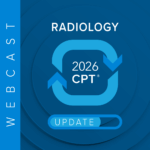Sepsis is a real phenomenon with serious implications.
On Jan. 26, I participated in a webcast on sepsis. I had many questions at the end, but couldn’t answer them all in real time, so I am addressing some of them now.
Let me preface this all by saying that sepsis is a real phenomenon with serious implications: 1 out of 3 deaths in the hospital results from sepsis, and it costs billions of dollars annually. It needs to be recognized and treated appropriately. It must be documented and coded correctly. Accurate diagnosis and robust documentation will prevent denials. Sepsis is defined as life-threatening organ dysfunction due to a dysregulated host response to infection.
One listener, Mary, asked about doing a retrospective review. Her organization seems not to review cases until the insurance is confirmed, and by then, the patient may be discharged. She said they want to review to ensure that all appropriate care was given, so why do I not recommend reviewing such cases retrospectively?
Let me clarify. I understand that organizations may not have the bandwidth to review every encounter and then have to pick and choose. Sometimes they pick by payor, but sometimes institutions flag particular diagnoses for review, regardless of payor. Sepsis is one of those diagnoses that I would recommend having an alert for review.
The most important reason is to ensure that the patient was taken care of appropriately. If there is a question about the clinical care, it should be referred to quality for review. If the coder or clinical documentation improvement specialist (CDIS) is unsure, they should arrange for a physician advisor or other clinician to perform a second-level clinical review.
Next, if made, was the diagnosis of sepsis clinically valid? If there is doubt, then a clinical validation query is in order. If a provider or service line is having issues with accurately identifying sepsis, they should receive education.
The most common scenario I encountered in which sepsis was missed was in mortality review. When I suggest that sepsis not be queried for in the traditional sense, retrospectively, I am thinking about this specific situation. If the diagnosis wasn’t made during the course of the encounter, then the providers likely did not follow the protocols to ensure that core measures were met. You may end up in the more favorable Diagnosis-Related Group (DRG), but trigger the Centers for Medicare & Medicaid Services (CMS) SEP-1 core measures. However, I do think it is crucial to identify gaps in knowledge for future clinical care. I want clinicians to recognize, diagnose, and treat sepsis. So, review if you like, but carefully consider the implication for retrospective queries for sepsis.
Another listener, Regina, made a comment on the use of the word “presumed.” She pointed out that the American Society of Anesthesiologists (ASA) Physical Status Classification System to determine risk for a patient to undergo anesthesia for a procedure includes sepsis under ASA Class IV (a patient with severe systemic disease that is a constant threat to life). She notes that it would be important to capture the risk adjustment in this case.
I have no objection to the use of uncertain terms with sepsis. In fact, I encourage it. Providers should make an uncertain diagnosis of sepsis as early as they entertain it and evolve, resolve, remove, and recap as appropriate. Emergency departments should screen all appropriate patients for sepsis and use signs and symptoms with uncertain terminology as necessary.
During the webcast, I used a case example where the CDIS applied the word “presumed” to the choices. The reason I discourage that is that the American Health Information Management Association/American Association of Clinical Documentation Improvement Specialists (AHIMA/ACDIS) Guidelines for Achieving a Compliant Query Practice advise that uncertain diagnoses in query questions-and-answer options should rarely be used, unless the provider used the uncertain verbiage themselves. My feeling is that you should educate your providers to know that uncertain diagnoses are compliant for inpatient care, and let them affix the term themselves, if they feel it is indicated. Uncertain diagnoses that get documented as a result of a query concurrently, but don’t appear in the final discharge summary (in definitive or uncertain format), are not coded.
The final question came from Stacia. It read, “without SIRS (Systemic Inflammatory Response Syndrome), how would you identify the potential for sepsis to start treatment?” I explained in my webcast that although the syndrome potentially includes other variables, the four variables of fever or hypothermia, tachycardia, tachypnea, and abnormal white blood cell count were readily accessible, and ended up being referred to as SIRS.
The reason SIRS should not be considered the criteria to diagnose sepsis is that the variables may be an adaptive, as opposed to a dysregulated, host response to infection. SIRS may clue us in that there is something awry, but whether it is sepsis or some other condition would be yet to be determined. It is a reasonable screening tool.
There are other screening tools, such as qSOFA (quick Sequential Organ Failure Assessment) and NEWS (National Early Warning Score). All of these are reasonably good at identifying sepsis and septic shock; NEWS actually seems to be the best. But all of these are intended to be tools to prognosticate deterioration and demise, not to serve as diagnostic criteria. I support use of any of these to alert the clinician to take a closer look at the patient to see if sepsis is present.
However, it must be emphasized that sepsis is a clinical diagnosis. It may be present without meeting any of these scores. There needs to be an infection and acute sepsis-related organ dysfunction.
Thanks to those of you who listened to the webcast in real time and submitted questions, and thanks to those of you who have or will take in the webcast on demand. If your clinicians want to understand sepsis, it is included in my set of documentation modules for providers with CME (icd10md.com/icd-10-md-modules). Until Valentine’s Day, if they use the coupon code “valentinesdiscount” and can receive 50 percent off team memberships of five or more individuals.













